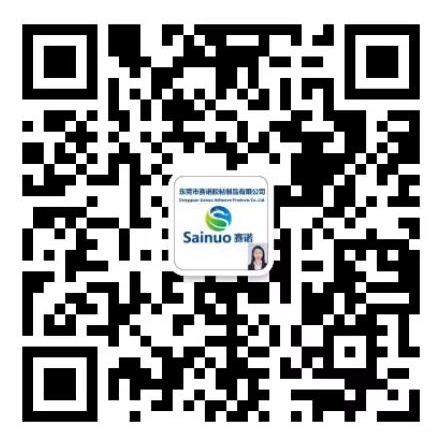Sustainable Solutions: Eco-Friendly Adhesive Paper Trends in Packaging
The Rise of Eco-Friendly Adhesive Papers in Packaging
Drivers of the Shift Toward Sustainable Adhesives
The movement towards sustainable adhesives is largely driven by a growing awareness of environmental issues among both consumers and businesses. As awareness increases, there is a collective shift towards reducing waste and sourcing sustainable products. Governments are also playing a crucial role by implementing legislation aimed at promoting waste reduction and encouraging eco-friendly product sourcing, which incentivizes manufacturers to adopt more sustainable practices. Economically, the rising costs of conventional materials have pushed companies to explore more cost-efficient, eco-friendly alternatives. Furthermore, partnerships between manufacturers and NGOs, as well as environmental organizations, highlight the importance of adopting sustainable practices in today’s competitive market, further accelerating this shift.
Impact of Consumer Demand on Material Choices
Consumer demand plays a pivotal role in influencing material choices towards eco-friendly options. Surveys indicate that over 70% of consumers are willing to pay more for products that are environmentally sustainable. This has led companies to shift their strategies. For instance, several brands that transitioned to sustainable products have reported a notable boost in customer loyalty. Social media campaigns aimed at promoting sustainability also significantly influence consumer behavior, encouraging purchases that align with eco-friendly values. Moreover, consumers now expect increased transparency from companies regarding their supply chains, demanding evidence of sustainable practices. This shift is forcing companies to provide proof of their eco-conscious strategies to maintain consumer trust and loyalty.
Key Trends Shaping Sustainable Adhesive Solutions
Recyclable and Compostable Adhesive Paper Innovations
Recent advancements in adhesive paper technology have sparked a noteworthy increase in the availability of recyclable and compostable formulations designed for natural breakdown. These innovative solutions significantly reduce the environmental footprint compared to conventional options. Statistics now highlight a growing presence of these materials in the marketplace as more manufacturers strive to adopt eco-friendly practices. For instance, traditional sticker paper often contains plastic coatings, while newer alternatives incorporate biodegradable substances, mitigating their environmental impact. Several industry leaders like Packmile are at the forefront, pushing the boundaries in this space by embracing and promoting these sustainable materials.
Minimalist Design & Reduced Material Consumption
In the realm of sustainable packaging, minimalist design has become a dominant trend, emphasizing the notion that less is indeed more. Brands effectively adopting this strategy have seen substantial benefits, including reduced material consumption and enhanced sustainability credentials. Research indicates that consumers are gravitating towards simpler and more efficient packaging options, aligning with their eco-conscious values. Notably, design changes such as streamlined packaging that incorporates innovative adhesive papers have been pivotal in lowering waste throughout the supply chain, presenting a win-win for both businesses and the environment.
Biodegradable Adhesives: Breaking Down Plastic Alternatives
Biodegradable adhesives are revolutionizing the industry by providing sustainable alternatives to plastic-based options. These adhesives work by breaking down naturally after usage, thus reducing plastic waste significantly. Recent statistics highlight the positive environmental impact achieved by replacing traditional plastics with biodegradable solutions across various industries. Case studies reveal success stories from sectors like food packaging, where these materials have been seamlessly integrated. As research continues to evolve, the potential for biodegradable adhesives to further transform the market remains promising, addressing future sustainability challenges while fulfilling the demand for plastic alternatives.
Honeycomb Paper: Strength Meets Sustainability
Honeycomb paper is a game-changer in sustainable packaging, offering remarkable strength while economizing on material use. This packaging technology is characterized by a unique hexagonal structure similar to that of a honeycomb, providing a high strength-to-weight ratio which enhances product protection without heavy materials. It is increasingly utilized in various packaging applications requiring both durability and eco-friendliness. Data shows that honeycomb paper significantly outperforms conventional materials in terms of both sustainability and performance, reducing carbon emissions and resource consumption. Companies like DS Smith are leading the way by successfully integrating honeycomb paper into their packaging solutions, paving the path for more sustainable packaging alternatives.
Thermal Paper Applications in Smart Packaging
Thermal paper technology is at the forefront of smart packaging solutions, offering efficient, waste-reducing benefits. Widely adopted across industries like retail and shipping, thermal paper's usage statistics showcase its growing prominence. By eliminating ink and toner, it enhances packaging efficiency and contributes to waste reduction in the supply chain. Furthermore, future trends highlight the potential for thermal paper to integrate more sophisticated features in smart packaging, including dynamic labeling and real-time tracking capabilities. These advancements underscore the pivotal role of thermal paper in driving innovation and sustainability in packaging.
Sticker Paper Advancements for Circular Economies
Sticker paper has advanced to align with circular economy principles, emphasizing sustainability and reduced waste. Modern biodegradable sticker options are gaining market traction due to increasing demand for eco-friendly solutions. Stickers play a crucial role in product branding and eco-labeling, contributing significantly to sustainability-focused initiatives. Statistics indicate that stickers made from eco-friendly materials positively influence brand perceptions and customer loyalty. As companies seek to enhance their sustainability credentials, adopting advanced sticker solutions becomes essential in fulfilling both environmental and consumer expectations.
Challenges and Future Directions for Adhesive Paper Adoption
Balancing Cost and Performance in Eco-Adhesives
Transitioning to eco-adhesives presents notable cost implications, requiring careful analysis to balance initial investments against long-term savings. While initial costs may be higher due to advanced technology and materials, many businesses are discovering significant long-term benefits, including reduced environmental impact and increased customer loyalty. For example, one case study highlights a company that successfully adopted eco-adhesives, seeing not only a decrease in waste but also an increase in customer retention due to its commitment to sustainability. Performance statistics indicate that eco-adhesives often match or surpass traditional options, especially in applications demanding durability and environmental responsibility. Industry experts predict that as technology matures, the cost of eco-adhesives will continue to decrease, leading to greater market share growth within the sector.
Regulatory Hurdles and Global Standardization
The global adoption of sustainable adhesives is heavily influenced by a complex regulatory landscape, which can pose significant challenges. Currently, regulations vary widely from country to country, complicating efforts for businesses operating internationally. This underscores the critical need for standardized definitions and certifications to streamline eco-friendly product adoption across borders. Regulatory hurdles not only affect innovation but can also delay market adaptation, as companies navigate disparate requirements. To address these challenges, industry leaders propose developing more cohesive global regulatory frameworks. By harmonizing standards and certifications, companies can more easily implement sustainable adhesive solutions, benefiting the environment and meeting the growing consumer demand for eco-friendly products.

 EN
EN
 AR
AR
 BG
BG
 HR
HR
 CS
CS
 DA
DA
 NL
NL
 FI
FI
 FR
FR
 DE
DE
 EL
EL
 HI
HI
 IT
IT
 JA
JA
 KO
KO
 NO
NO
 PL
PL
 PT
PT
 RO
RO
 RU
RU
 ES
ES
 SV
SV
 CA
CA
 ID
ID
 SR
SR
 SK
SK
 SL
SL
 SQ
SQ
 GL
GL
 HU
HU
 TH
TH
 TR
TR
 FA
FA
 MS
MS
 GA
GA
 MK
MK
 UR
UR
 BN
BN
 LA
LA






